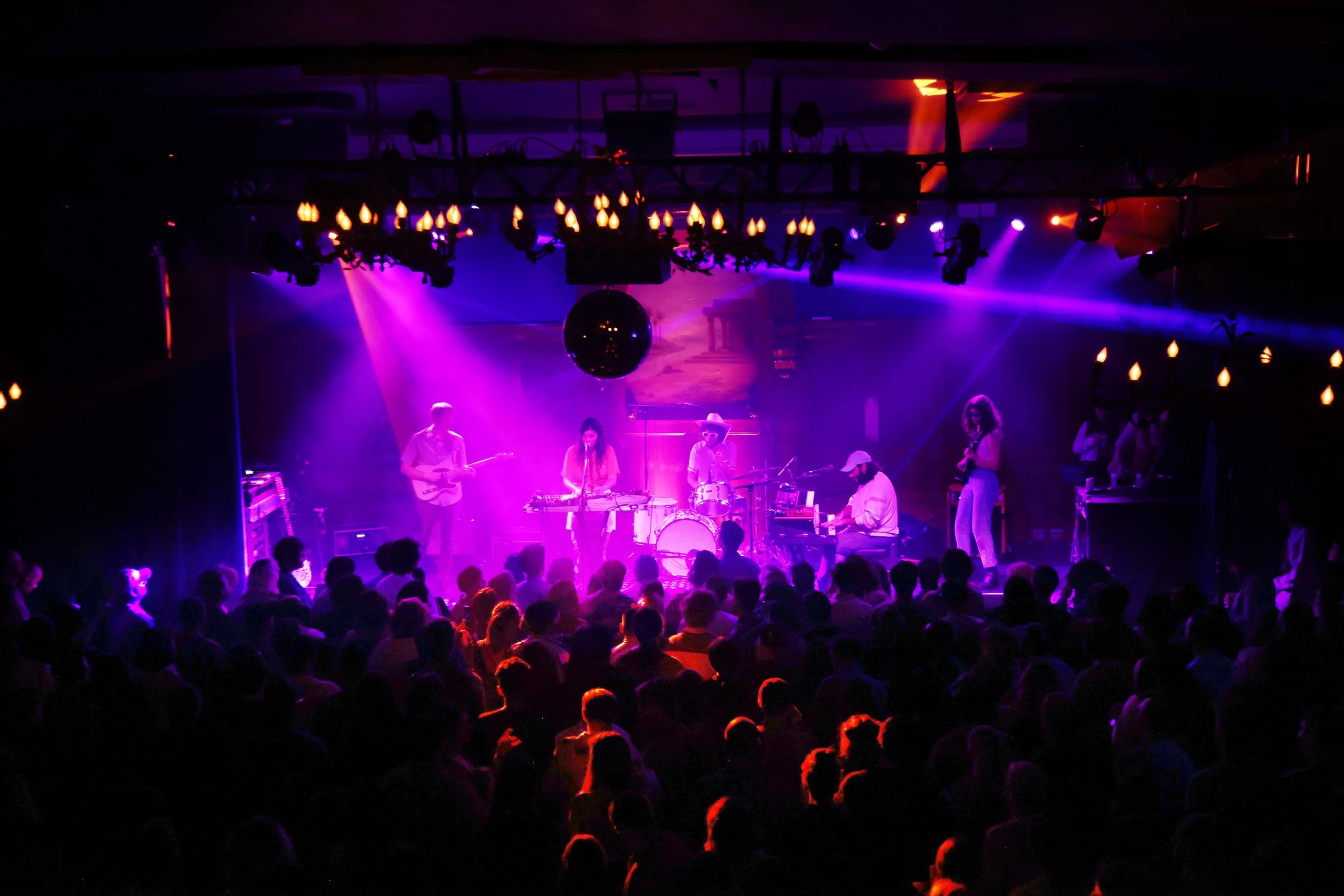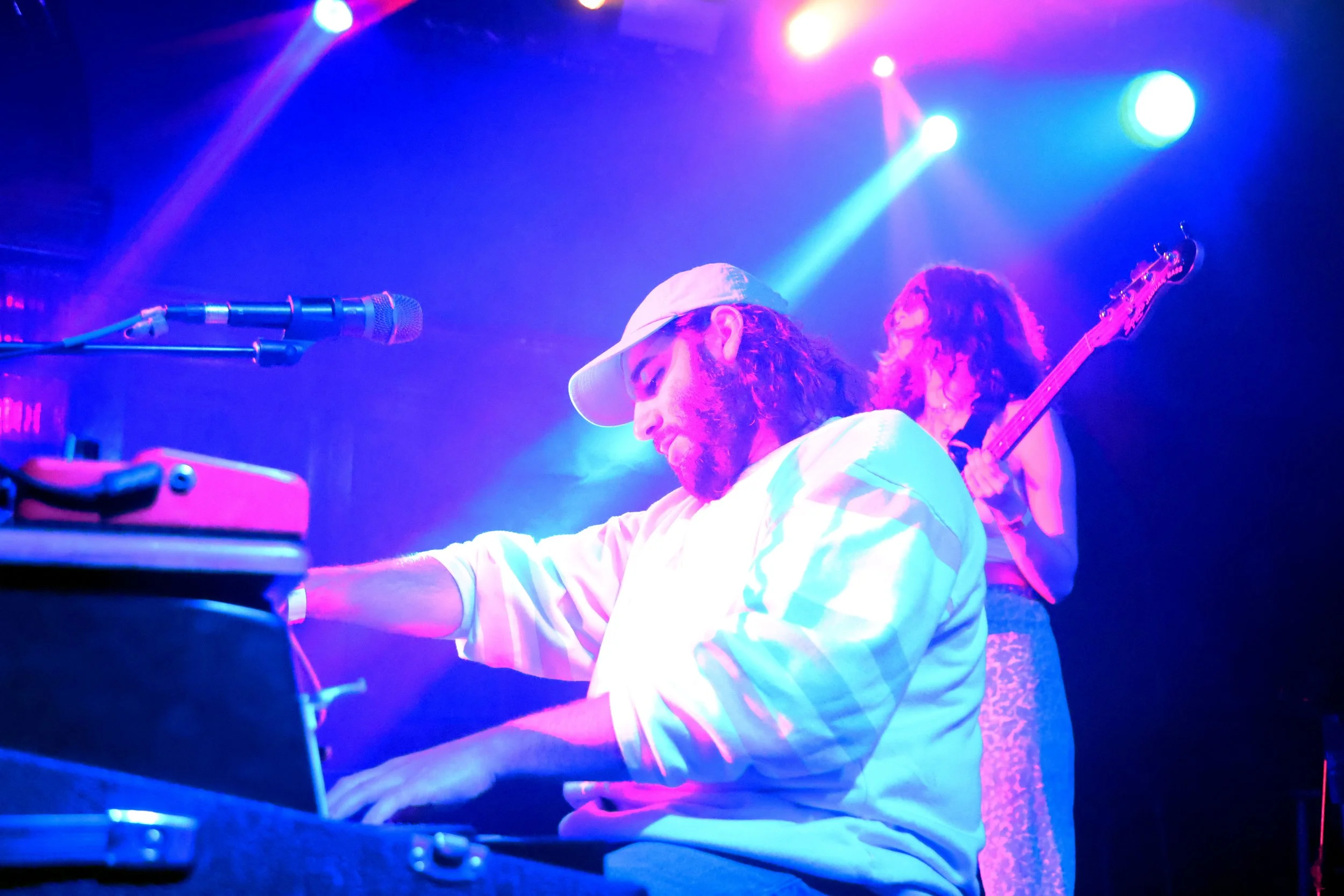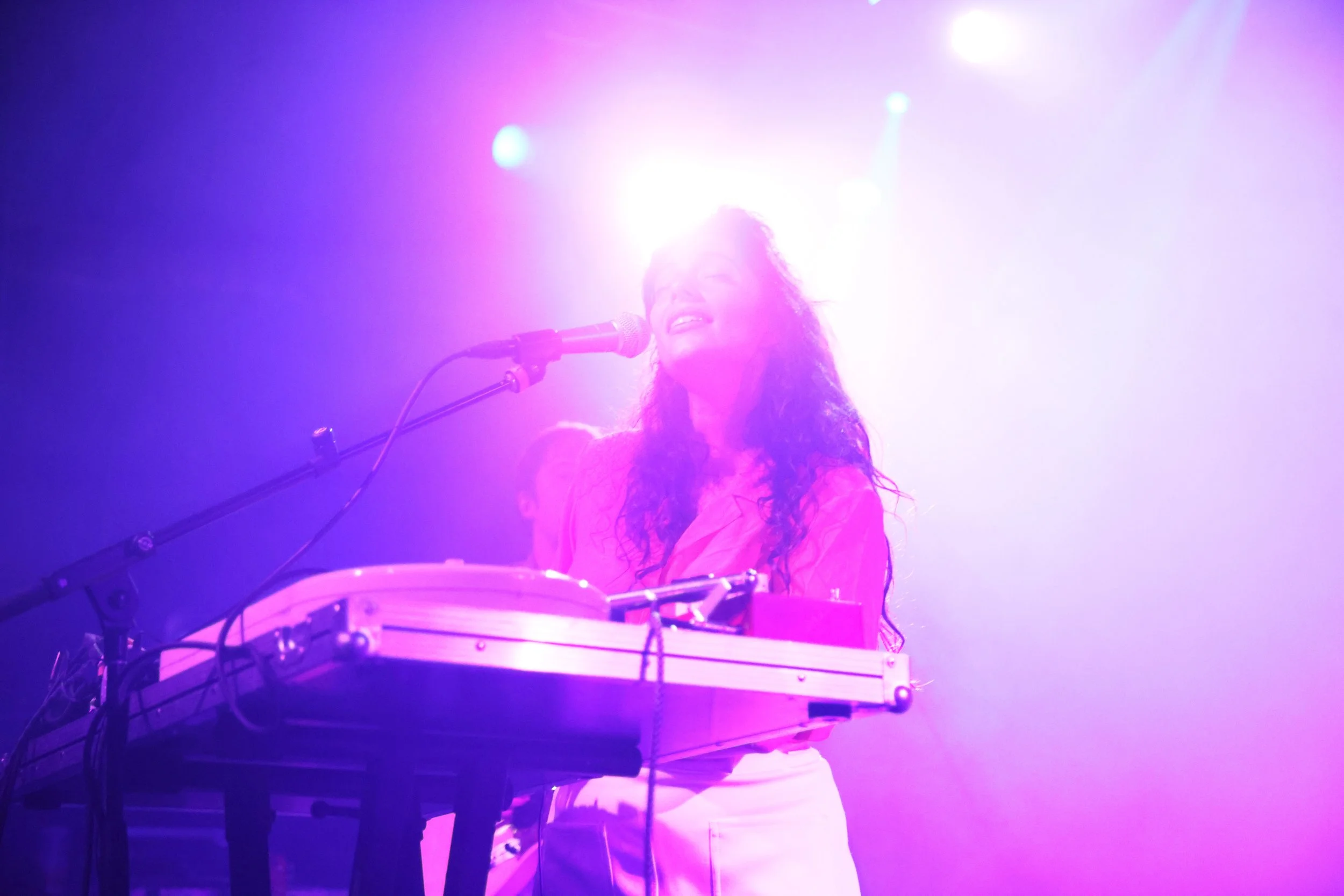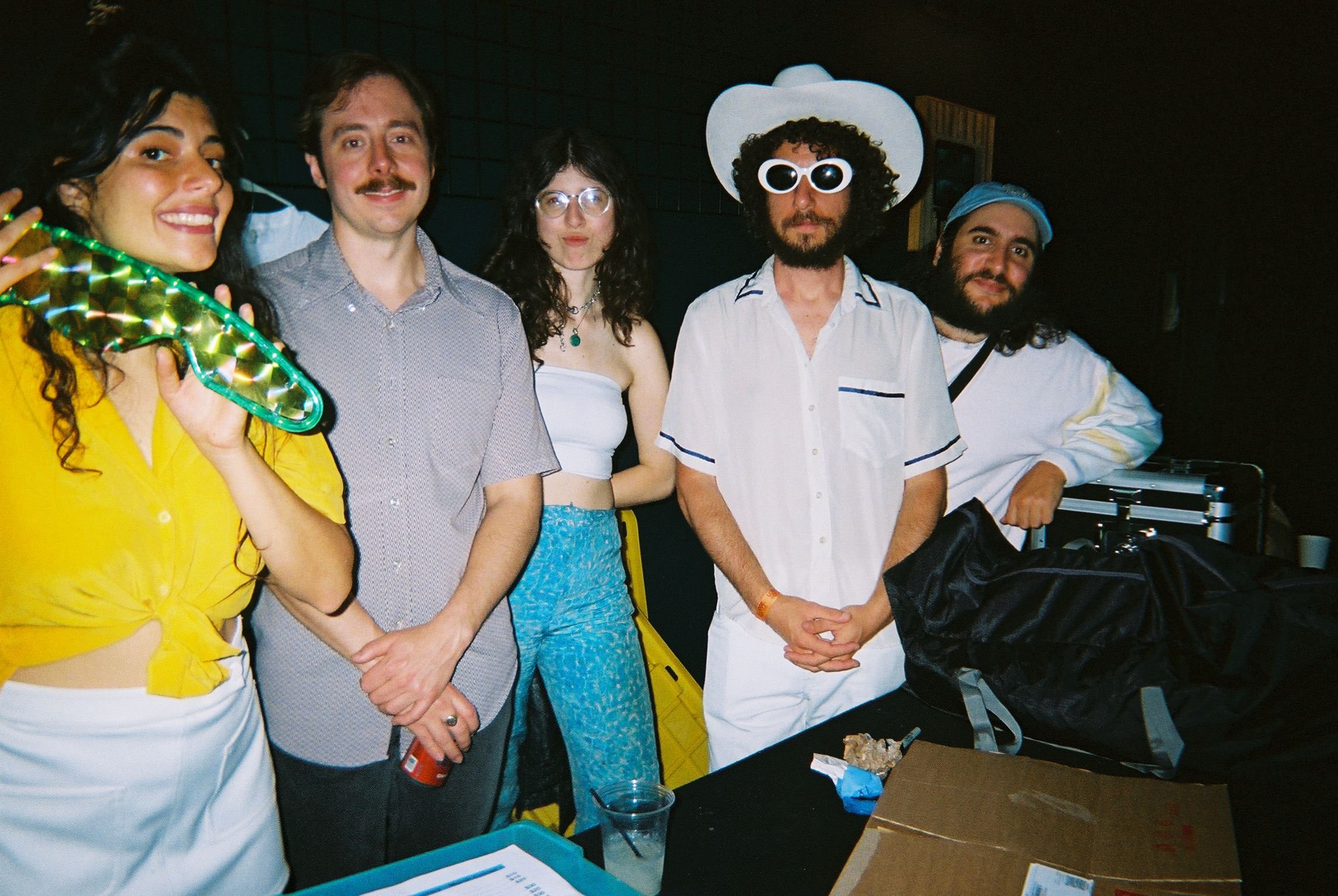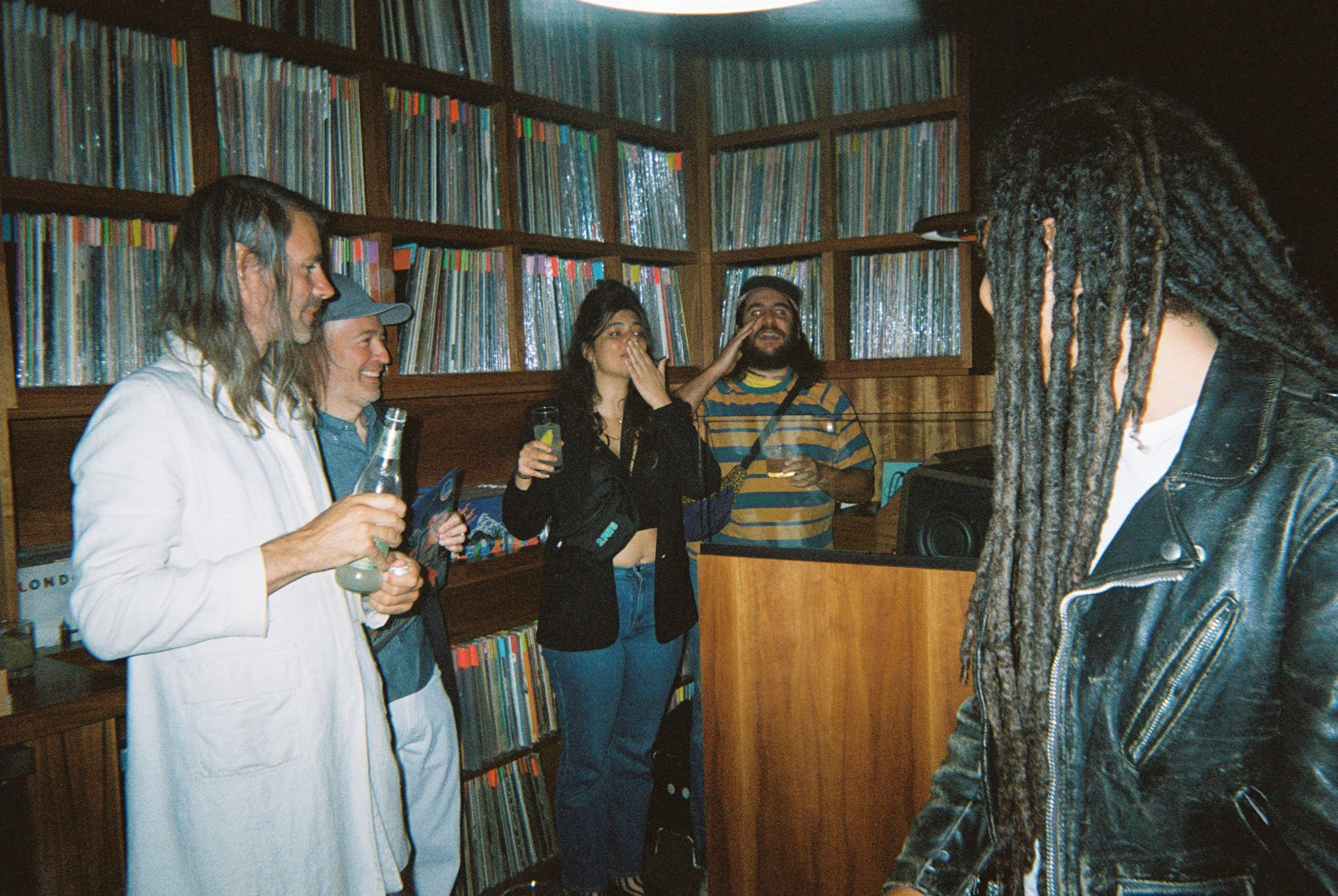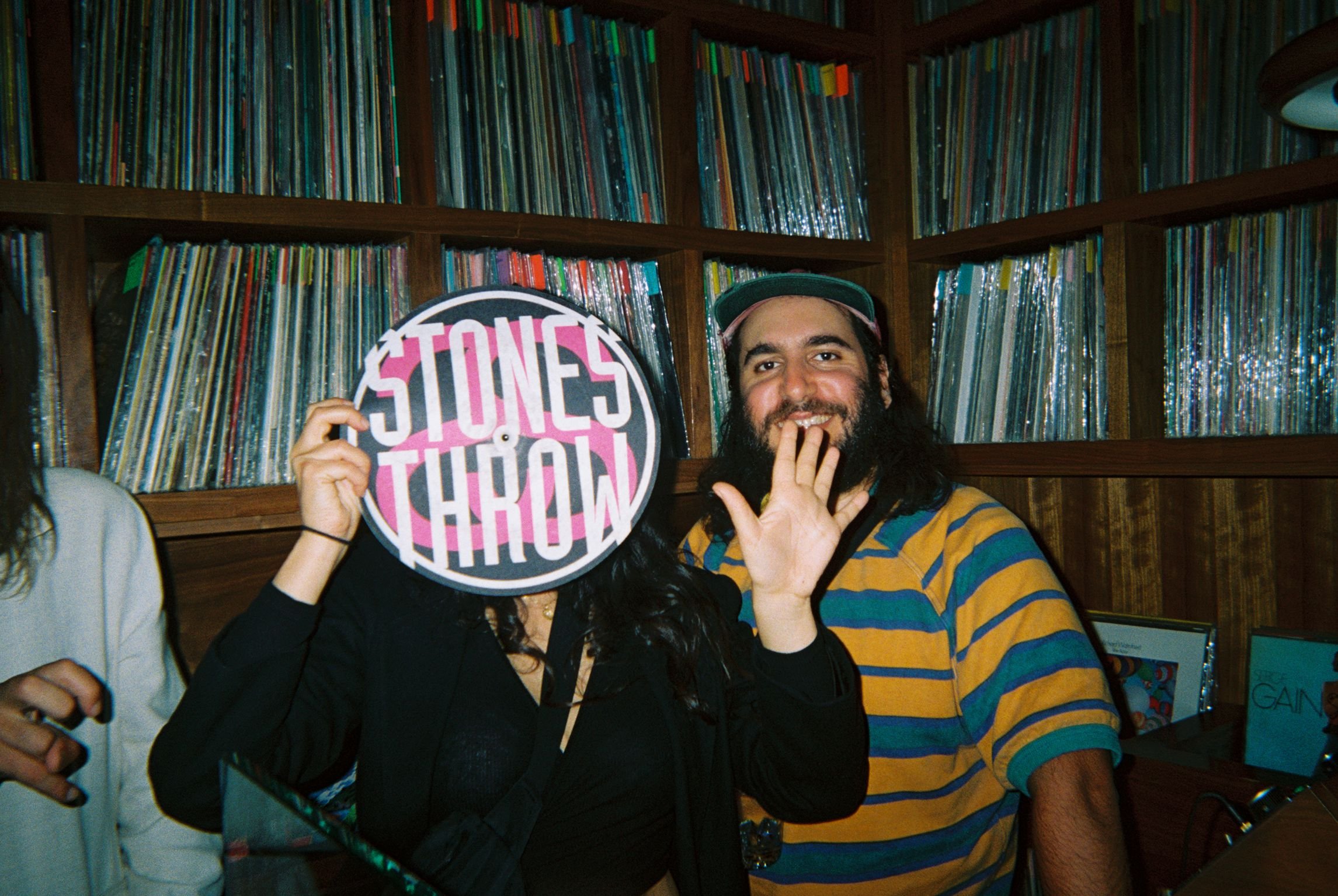Pearl & the Oysters Journey to New Depths with “Coast 2 Coast”
Photo by Carlos Garcia 360nmfilm.comLOS ANGELES--In performance art, is there any greater ecstasy than feeling that heart-to-heart connection between artist and audience? It wasn’t long after Pearl & the Oysters took the stage at Highland Park’s Lodge Room on April 29 that a person near the front of the crowd shouted out, “Marry me, Juliette!” The audience’s shouts and howls of appreciation intensified throughout the set performed by Juliette Davis on vocals, flute, guitar, Omnichord and a bunch of other electronic instruments; Joachim Polack on keys, vocals and electronics; Nico Leibman on bass, Adam Paulson on guitar and Ben Varian on drums. By the end of Pearl’s encore, the crowd had erupted into chants of “Jojo” (a salute to Joachim) no less than four times. There was so much love in that packed space, I wondered if this was what church felt like for believers.
I’ve been lucky enough to bear witness to Pearl & the Oysters’ entire musical journey so far, from their first performance in 2017 at The Atlantic in Gainesville, Florida, to April 29’s sold-out-at-500-capacity barnburner of an album release show at Lodge Room, only a short distance from the Pacific. Besides Juliette and Joachim being among the highest caliber of musicians to ever take shelter in Gainesville’s swamps, Pearl’s music captured my heart completely because it so aptly described the duality of my reality: blissing out in Florida’s replete, natural splendor and worrying about its steady degradation. Their latest full-length, “Coast 2 Coast,” continues to chronicle my experience, now having journeyed to Los Angeles and finding living here doesn’t always “look as advertised,” as Juliette purrs on recent single “Paraiso.” If you ask me, what makes this Parisian pair of high-school sweethearts so special is an expert pairing of diverse, authoritative musical ability and an insatiable curiosity for discovery of what’s around us, and with their latest release, inside of us.
On “Coast 2 Coast,” Pearl & the Oysters’ first release on Stones Throw Records, Juliette and Joachim achieve command of their sonic signature and reach a unity within their multimedia aesthetic and identity. My favorite part about this batch of songs is their fearlessness to dive into deeper thematical and lyrical depths. It’s one for the heads. It’s an album made for listeners who play a record again and again until they learn the stories behind the lyrics, or until they can screw their faces into a wince in perfect time with every funky lick or jazzy run.
A couple weeks before they kicked off their headlining national tour at Lodge Room, I invited Juliette and Joachim over for a heart-to-heart about the inspiration and themes behind “Coast 2 Coast” and to reflect on their six-year, coast-to-coast journey as Pearl & the Oysters.
“Coast 2 Coast” is Pearl & the Oysters’ fourth full-length album and your first for LA’s Stones Throw Records. Tell me the story of how this record came to be.
Juliette: “We literally recorded this album on one coast and then the other. It’s funny because there’s this whole idea of geography in the album, going from Gainesville, Florida, to southern California, but the third dimension is really traveling in our minds. Most of the record was written and recorded during the first months of the pandemic, in a very reclusive moment.”
Joachim: “We started the album in Florida, but we hadn't finished anything there, so we came to LA with works in progress in 2020. Most of side A ended up being songs that were written in Florida, except “Pacific Avenue.” This was actually the hardest album track listing for us to create. One day, we were driving up the 1, listening to the final mixes, and Juliette was like, ‘No, no, this isn’t good.’ We decided to place ‘Pacific Avenue’ earlier on in the album; we had ‘Space Coast’ come on first originally. Juliette really had a vision there.”
Juliette: “The slightest little shift made the whole album change.”
Joachim: “Listening in the car is really the vibe test.”
Photo by Carlos Garcia 360nmfilm.comHow does “Coast 2 Coast” maintain Pearl’s signature sound while continuing to evolve?
Joachim: “There’s something on ‘Coast 2 Coast’ that is true to the very first recordings we worked on as Pearl & the Oysters, a common thread in the sonic identity of this band: all the little noises, the bleeps. When we made the first album, we were looking for something that would be the glue and make it stand out. And so, it became those synthesizer noises. We could have tamed it down on our second, third or fourth albums, but we didn’t. I think people may find it obnoxious, but there are always side plots and whirly, little sounds everywhere. When I hear all these bubbly bleeps and bloops, it’s like soothing ear candy. I hope we will always sound like that.
“We also got deeper lyrically and wanted to get more thoughtful and intimate. In the past, we were into building our own little world with its own characters and mythology. And then we got to the third album, and we were like, we can't write about Kimono Elvin or Kid Manatee anymore. Like, it's too fucked up. Things are too sad, and we were too sad.”
I’d love to hear more about your intentions with the sound and mix of “Coast 2 Coast.” To me, the drums and bass sound more powerful and in-your-face than ever before.
Joachim: “The bass and drums were a big emphasis, yes. We wanted to sound harder, bigger and more like a rock or hip-hop record than bedroom pop. I feel like this [sonic shift] has been happening incrementally since the first album, when the sound was really computery, so tinny and trebly. ‘Canned Music’ was a bit more lush, with new textures. And then on ‘Flowerland,’ we were like, ‘OK, we're trying to have good drum sounds now.’”
Juliette: “It's also [the result of] opportunities we had, like recording some drums at the Pulp Arts studio in Gainesville, and then in LA, at our friend Riley Geare’s studio. Most of the drums we’d recorded beforehand were done outside of studios, or in home studios.”
Joachim: “We also went to Dent May’s studio Honeymoon Suite to record some drums. This album is our realization that we can get a much bigger, cleaner and cool-sounding drum sound if we have a good source, good monitoring and do it in an acoustically treated room. It’s something that most people know, but it kind of hit us late. [laughs]
Juliette: “I think we learned a lot from working with Shags [Chamberlain] on the mixing of ‘Flowerland,’ like what are the things that would help him have the best mix possible.”
Joachim: “We still recorded with an audio interface that cost like $50. That's the thing that's super cool about the democratization of music and recording technology: you can make a good record with a cheap audio interface and with cheap converters. It's cool to have nice outboard gear and be in fancy studios and stuff, but you can still make things that get very close to your vision in the box and by yourself, which is so awesome.”
What was your vision for the vocals on “Coast 2 Coast,” Juliette?
Juliette: “I used to sing in a very theatrical way. I loved musicals, and I was a very passionate singer. I took it down quite a bit, and now I try to seek more subtlety. I also have a few vocal heroes, and I always try to put myself in their skin when I sing. Colin Blunstone is one of the singers I try to emulate the most. Wanda Sá is a big influence. Jane Birkin was an influence on this album; I love the way she sings. And I always have Paul McCartney and John Lennon in the back of my mind, which must sound so weird for you to hear, because I really don't sound like them, but I do try to shape my voice with micro-changes thinking of how they would sing. Even though I have those other singers in my head, I try to create my style. It’s like, I have my buddies helping me record. They're watching over me.” [laughs]
Now, I wanted to dig deep into the themes and issues explored throughout the record. Something I thought I may be picking up on, especially on “Loading Screen,” is this modern, exhausting and oftentimes lonely balancing act we’re all required to perform: simultaneously living in a real world and then in a virtual reality where we’re responsible for curating online personas who lead lives of their own. Am I interpreting this right?
Juliette: “We were working on this record during peak COVID madness, at a time when we were all collectively staring at our screens, and it was very alienating. There's this sense of losing one’s mind, waiting and living life through your computer, for better and worse.”
Joachim: “When we worked on the song’s chorus, we lived in a tiny place and our only ‘window’ into the outside world was a screen. I think it's a song about being frustrated with having to rely on technology that you don't really understand. Both of us missed that train -- we never learned computer science or anything like that, so it’s a language we don’t speak, but I'm fascinated by it. I think that's the subtext of the song maybe; we feel threatened by technology and what it does to our social inhibitions and stuff.”
What about the story behind “Konami?” Are we loving the sound of waves coming out of the white noise machine, or lamenting the fact that they’re not real?
Juliette: “The idea is extremely romantic. The truth behind it is, I tried so many things to sleep, and a sound machine is not the thing that helps me.
Joachim: “We love when technology becomes a character in a song. We always joke about the sad computer, [the IBM 7094 that, in 1961, became the first computer to sing with its rendition of 1892’s ‘Daisy Bell.’] To us, anything about a robot that feels emotional is like the best music ever.”
Juliette: “’Konami’ is also about the blurry lines between dreams and reality, between objects and technology and organic things. So is the whole intro to the album, which is actually an homage to Haruomi Hosono. It’s a cover of a very abstract-sounding piece of music on ‘Cochin Moon.’ It’s the imitation of insects created with synthesizers. This connection between synthesizers and the organic world is a really important part of this album, and ‘Flowerland,’ too.
Photo by Carlos Garcia 360nmfilm.comEven on your first record, I feel, you were building bridges between the physical, natural world and this high-tech, virtual reality we’re now forced to live in. Any other themes on this album?
Joachim: “Less transparently, the album title was intended to allude to the concept of eternal recurrence, birth and death and the repetitive cycles of nature. We were inspired by ‘Águas De Março’ on the album ‘Jobim’ by Antônio Carlos Jobim. The circular nature of the musical form itself, the repetitive melody and the fact that the song never really has any cadence or pause is a mirror of certain physical phenomena: in this case, the natural cycles occurring all around us, life and death and life again and the constant transformation of matter. That's what the lyrics are about, more or less.
“We don't have any 'circular' songs per se on ‘Coast 2 Coast,’ but I feel like the album talks about cycles a lot [like the sleep cycle] and has repetitive elements like tremolo guitars and delay that were intended to create an arc or cycle. So, it's not quite a concept album, but these deeper things tie the songs together, and so does the idea of the journey as a concept. It can be materialized as this outside journey, taking your feet and going places and hopping on transportation. Then, there’s that journey inward, which, during COVID, we were literally forced into.”
Speaking of journeys, I wanted to indulge in a bit of ‘stalging [engaging in nostalgia.] I pulled up a quote of Jo’s from our first interview together six years ago:
“Every band wants to be as big as possible, but I want to enjoy what we are doing now…When we started Pearl, all I could see was how good it felt to play music without those other concerns or expectations.”
Since our ‘Flowerland’ interview in September 2021, you’ve signed to Stones Throw, played SXSW and are gearing up to go on your first nationwide, headlining tour. I’m wondering if that’s still how you feel. How would you characterize Pearl’s half-decade journey?
Joachim: “We were galvanized by the reception of the music in Florida and the Southeast enough that, at one point, it became much more serious to us. We wanted the project to grow. We wanted to move to Los Angeles and thought hopefully we could get a record deal. That wasn’t something that was there in the beginning.
“The band was, at one point, just a cathartic thing, and now it’s this outlet that comes with huge baggage. We're not even that big, but it feels like there are more expectations attached to it. It’s not just Juliette and I; it's like its own thing. It has its own identity, and people who don’t know who we are like it.
Photo by Carlos Garcia 360nmfilm.comI can visualize that, like this life force oozing out of you both and forming its own separate mass here in the room with us, like Alex Mack-style. How do you hold onto that pure, joyous experience of loving to play music together as things are changing so rapidly and wonderfully for Pearl?
Juliette: “What’s changed is that now we have a beautiful team of people working with us. Music is a full-time job now, but my reason for playing music hasn't changed over the last six years. It’s about keeping the creativity and pleasure intact.
“I love playing live and absorbing the energy at the shows. Of course, more and more people know the lyrics now and are excited to hear the songs live, but it's the same thing at the end. It's sharing from an artist to an audience. I don’t care about the quantity of people in the audience; I just care that people are receptive to it. All those tours around the Southeast when we started the band and saw that people understood the music and dug it -- that is, for me, what peak happiness is.”
You’re about to take this new batch of songs on the road for a headlining, national tour. Who are you taking on the road with you? And what’s struck you about playing for Los Angeles audiences?
Joachim: “This is only our second time doing a full tour as a five-piece: we have Ben Varian on drums, Adam Paulson on guitar and Joejoe Faught on bass.
“We have some heads for sure. After the LA shows, there's so many people that want to talk about inspiration, and they get us, spot-on.
Photos in slideshow by Tyler Francischine
